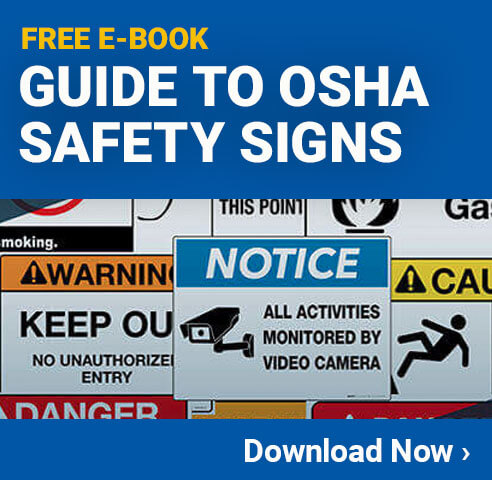
It may sound like a silly nonsense word ripped straight from a long-lost Dr. Seuss book, but HAZWOPER is actually an essential acronym for many modern industries. HAZWOPER stands for Hazardous Waste Operations and Emergency Response, and it refers to widely adopted health and safety standards for those who work with or near hazardous waste.
What are HAZWOPER Regulations?
There are several different regulations that specifically handle HAZWOPER. The first being 29 CFR 1910.120, the general industry regulations for hazardous waste operations and emergency response. This regulation covers the following main points:
- Cleanup operations for hazardous waste sites
- How hazardous waste is handled in treatment, disposal, and storage facilities
- The necessary emergency response procedures in the event of a hazardous waste release leading to hazardous material exposure
It’s good to note that when these regulations refer to hazardous waste, they also are referring to The Comprehensive Environmental Response, Compensation, and Liability Act, or CERCLA wastes, DOT hazardous materials, and biological agents. Hazardous waste is a broad term used to encompass all the dangerous substances that pose a risk to the immediate health and safety of workers during the day.
The interesting part about OSHA is that there is another almost identical regulation regarding HAZWOPER. Take a look at 29 CFR 1926.65 hazardous waste operations and emergency response for construction. Both OSHA regulations have control over private sector workers, but they do not have control over the public sector. The exception to this rule is if the public employer is obligated to follow one of the 28 OSHA-approved state plans.
Now, the other authority when it comes to handling situations involving HAZWOPER is the U.S. Environmental Protection Agency, or the EPA. The EPA’s rules for HAZWOPER are located in 40 CFR 311. Unlike OSHA who controls the private sector of businesses that handle hazardous materials, the EPA controls the public sector which includes local and state government employees who deal with hazardous cleanup. The EPA’s standard is identical to OSHA’s 1910.120 regulation; however, it watches over a different set of people.
History of HAZWOPER

When the Hanford Nuclear Reservation was decommissioned in the 1980s, the United States government suddenly found itself the not-so-proud owner of 53 million gallons of high-level radioactive waste, 25 million cubic feet of solid waste, and more than 200 square miles of contaminated groundwater. Dubbed "the most toxic place in America," the Hanford site required massive clean-up efforts that continue to this day (and, sadly, are far from complete).
Facing mounting public backlash over the potential for grand environmental catastrophe at Hanford and sites like it, then-President Ronald Reagan signed into law the Superfund Amendments and Reauthorization Act, which, in part, urged OSHA to propagate regulations to protect workers engaged in the increasingly necessary tasks of hazardous waste removal and disposal.
With crucial input from the Environmental Protection Agency and the National Institute for Occupational Safety and Health, OSHA modified and expanded the Department of Defense's World War II-era HAZWOP standard to create the more modern, comprehensive HAZWOPER standard.
Who Needs HAZWOPER Training
HAZWOPER training is an integral part to all emergency response operations regarding hazardous materials. HAZWOPER is unique in that it covers workers who do not interact with hazardous waste but still work in a facility where hazardous waste is created, stored, or treated. It may not seem as crucial to train these workers on the HAZWOPER standard—after all, they don't come into direct contact with hazardous waste—but in the event of a spill, explosion, or other disaster, everyone in the facility must know exactly how to safely handle the situation.
There are five main categories when it comes to HAZWOPER training:
- Cleanup site employees
- Workers involved in hazardous waste treatment, storage, and disposal facilities
- Emergency responders
- Cleanup operations required by the Resource Conservation and Recovery Act
- Training for voluntary cleanup operations
Each category for HAZWOPER training takes on a certain number of hours for completion as well as different waste management strategies, which is why it’s so important to classify a worker in the right category in case of a hazardous material release.
HAZWOPER Training Requirements
According to the Occupational Safety and Health Guidance Manual for Hazardous Waste Site Activities, "Anyone who enters a hazardous waste site must recognize and understand the potential hazards to health and safety associated with the cleanup of that site." Thus, thorough training for all individuals working at a hazardous waste site is not just a good idea, it's mandated by the OSHA HAZWOPER standard. However, the extent of that required training varies depending on a person's role and their expected level of exposure.
HAZWOPER training consists of at the minimum 8 hours of training, while some responders depending on their role, may require up to 24 hours or more of training. Every year after, each employee must go through what is called an annual refresher. The refresher course is almost entirely based on the current level of competency. Supervisors and managers are required to have completed at least as much HAZWOPER training as those they are overseeing.
Those working in site clean-up require significantly more training than first responders. Your average site worker requires 40 hours of initial HAZWOPER training, three days of supervised field experience, and an 8-hour refresher course each year. Occasional workers require 24 hours of HAZWOPER training with one day of supervised field experience and the 8-hour annual refresher course. As with first responders, all managers are required to have at least as much training as their subordinates.
In the realm of treatment, storage, and disposal, workers are required to complete 24 hours of initial HAZWOPER training, followed by 8 hours of training each year to keep their skills and knowledge sharp.
While these requirements may seem strict, there are many options for acquiring the amount of HAZWOPER training. Many community colleges and universities offer HAZWOPER courses, and in many cases, online training can be used to complete refresher course training requirements.
Training Levels
There are five levels of HAZWOPER training available to workers:
-
First Responder Awareness – This training level encompasses on-site workers who have noticed the hazardous material release first. They must be trained to be able to correctly initiate the planned emergency response sequence. This can include a sequence such as:
- Triggering an alarm
- Letting the entire facility know
- Calling 911
- Having the on-site response team get to work on the hazardous substance release.
- It must be noted that this is the foundation of emergency response training for HAZWOPER, everything that comes next is added upon this initial knowledge.
- First Responder Operations – This training applies to workers who are tasked with the initial response to a hazardous substance release. Their primary goals are to protect people, the environment, products, and inventory. This group of individuals will need at least 8 hours of HAZWOPER training to be proficient in areas such as:
- Risk assessments
- The applicable terminology
- The appropriate use of personal protective equipment
- Containment operations
- An understanding of emergency procedures
Not only must they know all the above information, but they also have to be able to stop the hazardous material release. Those actions can include closing vents, shutting off pumps, etc.
-
Hazardous Materials Technician – These workers are trained to prevent future hazardous material releases after the initial release. They must have a total of 24 hours of training and be able to demonstrate the ability to:
- Understand both risk and hazard assessment techniques
- Know the related behavior and terminology of hazards
- Have the ability to implement ERPs
- Know how to use personal protective equipment
- Can use an Incident Command System
- Have the ability to identify, classify, and verify hazardous materials with specialized equipment
- Have the knowledge to be able to perform advanced containment practices
-
Hazardous Materials Specialist – This level of training gives the employee the ability to provide additional support to hazardous materials technicians. These employees are the ones that go between the authorities and the company during and after an accident. This level requires 24 hours of training and must be able to demonstrate their knowledge on the following:
- Create and implement ERP and operating procedures during an emergency
- Use specialized instruments for hazardous material releases
- Have the ability to perform containment measures
-
On-Scene Incident Commander – These are the employees that have the authority to oversee the management of emergencies. They must be strategic in developing/implementing hazardous release preventative measures and create objectives. With the completion of a 40-hour course, this level must be able to demonstrate their ability in being able to:
- Have a deep understanding of the associated risks
- Knows of the Federal Regional Response team
- Can create and implement local, state, and companywide ERPs and the ICS
HAZWOPER Refresher
The HAZWOPER certification is valid for up to 12 months, after which a refresher training is required to maintain the certification. There are several benefits to enforcing a refresher course for employees in HAZWOPER training. Those include:
- Reducing training costs – Refresher courses are much less expensive than their full-length counterparts. This is one of the reasons why employers are incentivized to follow through with this safety requirement.
- Reducing workplace accidents – Always making sure that employees know how to avoid an accident or respond to an accident is essential for injury prevention.
- Staying compliant with regulations – OSHA and the EPA require retraining for employees based upon their already existing knowledge. Sidestepping this law can increase the company’s risk in failing to respond to an emergency appropriately and safely.
- Improving employee job satisfaction – Showing that you care for your worker’s safety is a large component in fostering a safe and healthy workplace, retaining employees, and developing a positive environment for workers.
- Reducing the time spent away from work – Naturally, an 8-hour course is much shorter than employees being away for 24-40 hours of coursework.
- Engaging your workforce – Providing workers with engaging material benefits in ways regarding their satisfaction with their job. They have the information they need to be helpful in these situations which can be rewarding.
- Building a positive company reputation – Less workplace accidents and fair treatment of workers builds a positive reputation of the employer in the area. This will draw more workers and increase job satisfaction.
Keeping your employees up to date and knowledgeable for this type of dangerous environment is easily done by mandatory refresher courses.
What is the Difference Between HAZMAT and HAZWOPER?
Knowing the difference between the acronyms HAZMAT and HAZWOPER is important when trying to run an emergency response program. With that being said, HAZMAT is the abbreviation for “Hazardous Materials.” The training for HAZMAT is considerably different than for HAZWOPER. In fact, it is commonly associated with Department of Transportation training for hazardous material handling, packaging, shipping, and the completion of HAZMAT documentation.
On the other hand, HAZWOPER, as we mentioned before stands for “Hazardous Waste Operations and Emergency Response” which specifically handles cleanup of contaminated worksites. OSHA and the EPA’s Resource Conservation and Recovery Act are what directly handles HAZWOPER.
Overall, while both HAZWOPER and HAZMAT refer to very different concepts, they both are tied together in the realm of health hazards and potentially uncontrolled hazardous waste.
Similar Articles
- OSHA’s Guidelines to Protecting Employees from Coronavirus
- Emergency Spill Cleanup & Containment
- What is HAZCOM? (Hazard Communication Definition + OSHA Standards)
- Hazardous Waste Disposal
- OSHA Facts [Updated Statistics 2019]
- OSHA Card [Program Requirements + Benefits]
- Improving Workplace Electrical Safety
- Safety Data Sheets (SDS)
- OSHA Accident Reports


